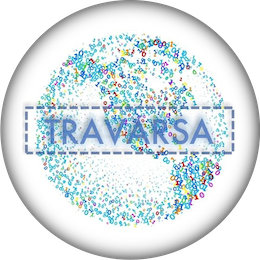Cyber Security Roadmap: Career Path. Embark on a cybersecurity career journey with our....
Read MoreZero Trust Architecture (ZTA) - Strategies and Tools

The rise of cyber threats poses a significant challenge to organizations across all industries. As the digital ecosystem evolves, so do the tactics of cybercriminals, necessitating a proactive approach to network security. Traditional security models, built on the premise of a trusted internal network and a fortified perimeter, are no longer sufficient in thwarting sophisticated attacks. This is where Zero Trust Architecture emerges as a beacon of hope, offering a paradigm shift in cybersecurity strategy.
What is Zero Trust Architecture (ZTA) ?
Zero Trust Architecture (ZTA) is a cybersecurity framework based on the principle of never trusting and always verifying. It assumes that threats could be both external and internal, and thus, it continuously authenticates and authorizes devices, users, and applications before granting access to resources. This approach is designed to enhance security by minimizing the potential impact of breaches and reducing the attack surface within an organization’s network.
Usage:
- Securing remote workforces and hybrid cloud environments.
- Protecting against lateral movement within a network by attackers who have gained initial access.
- Implementing least privilege access control to minimize the potential damage from breaches.
- Enhancing data security by restricting access only to authorized users and applications.
Strategies and Software Used : Zero Trust Architecture (ZTA) :
Identity and Access Management (IAM):
A framework for managing user identities and access permissions within a system or organization. IAM ensures that only authorized users can access specific resources, based on their roles and needs. This helps to:
- Improve security: By restricting access, IAM reduces the risk of unauthorized access and data breaches.
- Increase efficiency: Streamlining access management saves time and effort compared to manual processes.
- Meet compliance requirements: Many regulations mandate secure access controls, which IAM helps to achieve.
Softwares used:
- Microsoft Azure Active Directory (Azure AD)
- Okta
- Ping Identity
- ForgeRock
- SailPoint
Multi-factor Authentication (MFA):
An extra layer of security for logins, requiring two or more factors to verify a user’s identity beyond just a password. MFA helps prevent unauthorized access even if an attacker steals your password, making it a crucial security measure for protecting sensitive accounts. MFA adds an additional step to the login process, such as:
- One-time codes (OTPs): Codes sent via SMS, email, or generated by an app, valid for a short time.
- Fingerprint scanners: Using your fingerprint for identification.
- Security keys: Physical devices that provide unique codes for authentication.
Softwares used:
- Duo Security
- Google Authenticator
- Microsoft Authenticator
- RSA SecurID
- YubiKey
Zero Trust Network Access (ZTNA):
A security approach that grants access to specific applications or resources, not the entire network. It assumes no user or device is inherently trustworthy and verifies each access request rigorously. ZTNA offers a more secure and flexible alternative to traditional VPNs for accessing internal resources in today’s increasingly remote work environments. ZTNA is used to:
- Improve security: By limiting access to specific resources, ZTNA reduces the potential damage from breaches.
- Enable secure remote access: Employees can securely access applications from anywhere without needing VPN access to the entire network.
- Simplify access management: ZTNA centralizes access control, making it easier to manage permissions for various users and resources.
Softwares used:
- Cloudflare ZTNA
- Palo Alto Networks Prisma Access
- Zscaler Private Access
- AWS AppStream
- Citrix Workspace
Microsegmentation:
A security strategy that divides a computer network into smaller, isolated segments. Each segment contains specific resources and restricts traffic flow between them, limiting potential damage from cyberattacks. Microsegmentation is a critical component of Zero Trust security architectures, offering a layered defense against cyber threats. Microsegmentation is used to:
- Enhance security: By isolating workloads and data, it restricts attacker movement and access to other parts of the network even if they breach one segment.
- Improve compliance: It helps meet regulations requiring data isolation and protection.
- Increase operational efficiency: Granular control allows for easier management of security policies and network traffic.
Softwares used:
- Cisco ACI
- VMware NSX
- Palo Alto Networks Prisma SASE
- Microsoft Azure Firewall
- AWS Network Firewall
Data Loss Prevention (DLP):
A set of tools and processes designed to prevent the unauthorized transfer, sharing, or exposure of sensitive data. DLP implements policies and technologies to identify and stop unauthorized data movement, playing a vital role in protecting sensitive information in today’s digital world. DLP is used to:
- Protect sensitive data: This includes confidential information like personal data (PII), financial information, intellectual property (IP), and trade secrets.
- Comply with regulations: Many regulations mandate organizations to protect sensitive data, and DLP helps ensure compliance.
- Reduce the risk of data breaches: By monitoring and controlling data movement, DLP helps prevent accidental or malicious leaks of sensitive information.
Softwares used:
- McAfee Data Loss Prevention
- Symantec DLP
- Forcepoint DLP
- Cisco Cloud Data Loss Prevention (DLP)
- Microsoft Defender for Cloud Apps
Security Information and Event Management (SIEM):
A SIEM is a software solution that collects, aggregates, and analyzes security events from various sources across an organization’s IT infrastructure. SIEM acts as a central hub for security information, playing a crucial role in security monitoring, threat detection, and incident response. SIEM is used to:
- Detect security threats: By analyzing security logs and events, SIEM can identify suspicious activity that might indicate an attack or other security issue.
- Investigate security incidents: SIEM provides centralized access to security data, enabling faster and more efficient investigation of security incidents.
- Improve security posture: By generating insights and reports from security data, SIEM helps organizations identify security weaknesses and improve their overall security posture.
Softwares used:
- Splunk
- Elastic Stack
- LogRhythm
- McAfee Enterprise Security Manager (ESM)
- SolarWinds Security Event Manager (SEM)
Future Advancements in Zero Trust Architecture (ZTA)
- Integration with Artificial Intelligence (AI) and Machine Learning (ML):
- AI and ML can analyze user behavior, network traffic, and other data to dynamically adjust access controls and identify potential threats.
- Biometric Authentication:
- Utilizing biometric features like fingerprints, facial recognition, or iris scans can further strengthen continuous verification mechanisms.
- Decentralized Identity Management:
- Blockchain technology could potentially be used to create a more secure and user-controlled approach to managing identities and access.
- Self-Service Access Management:
- Empowering users to request and manage their own access permissions within defined security parameters.
- Focus on User Experience:
- Streamlining ZTA implementations to ensure user experience remains smooth and efficient.
- Standardization and Interoperability:
- Promoting consistent standards and frameworks to enable seamless integration between different ZTA solutions from various vendors.
- Cloud-Native ZTA solutions:
- Tailored ZTA implementations specifically designed for cloud-based environments.
- Zero Trust for Everything (ZT Everything):
- Expanding ZTA principles beyond traditional IT infrastructure to encompass Internet of Things (IoT) devices and Operational Technology (OT) environments.
These advancements aim to enhance the effectiveness and user experience of ZTA, solidifying its position as a crucial component of future cybersecurity strategies.
In conclusion, Zero Trust Architecture represents a paradigm shift in the realm of cybersecurity. By adopting a posture of perpetual skepticism and implementing stringent access controls, organizations can fortify their defenses against evolving threats. As we navigate the complex terrain of network security in an age of cloud computing and interconnected systems, embracing the principles of Zero Trust Architecture becomes imperative. Through continuous education, collaboration with cybersecurity entities such as the National Cyber Security Centre, and practical application in real-world scenarios, organizations can build resilience in the face of cyber threats. Whether embarking on a cybersecurity course, engaging with a cybersecurity company, or pursuing opportunities such as internships and institutes dedicated to cybersecurity, the journey toward safeguarding digital assets begins with embracing the principles of Zero Trust Architecture.
Guerilla Marketing Strategies – Tools and Tactics
Discover the power of guerrilla marketing strategies – from viral stunts to interactive....
Read MoreIntroduction to Frontend Web Development
Discover the art of Frontend Web Development – from building captivating user interfaces....
Read MoreNo-code/Low-code Development Benefits and Platforms
Discover the benefits of No-code/Low-code Development and explore leading platforms in this revolutionary....
Read MoreIntroduction on various types of Cloud Services
Explore the diverse landscape of cloud services. From computing power to storage, discover....
Read MoreHow to start your career as a Software Testing Engineer ?
Unlock the path to becoming a Software Testing Engineer with our guide. From....
Read MoreGetting Started with Microsoft Fabric
Unlock the power of Marketing Automation with Machine Learning. Elevate your strategies, engage....
Read MoreTop AI (Artificial Intelligence) Tools and Frameworks
Dive into AI excellence with TensorFlow, PyTorch, NLTK, and more! Uncover their powers....
Read MoreHow to start your career in App Development ?
Unlock the path to a thriving app development career with our guide. From....
Read MoreUnveiling the Power of Dark Social: Dark Social Campaigns
Unlock the power of Dark Social Campaigns! Explore the benefits of private sharing....
Read More









